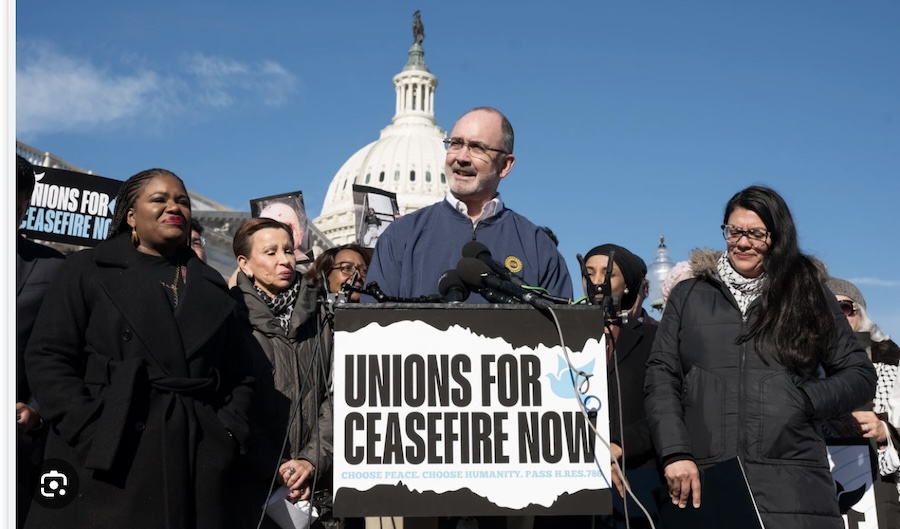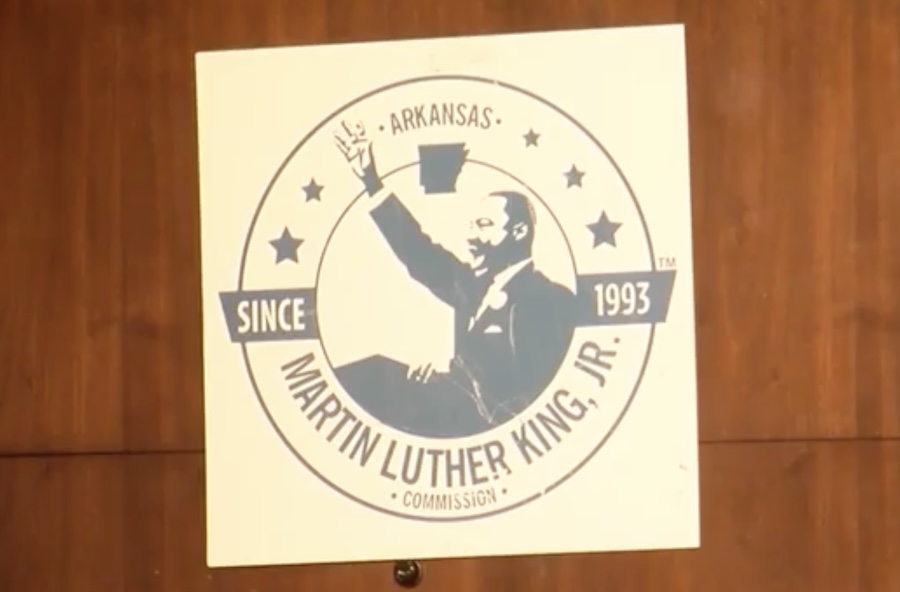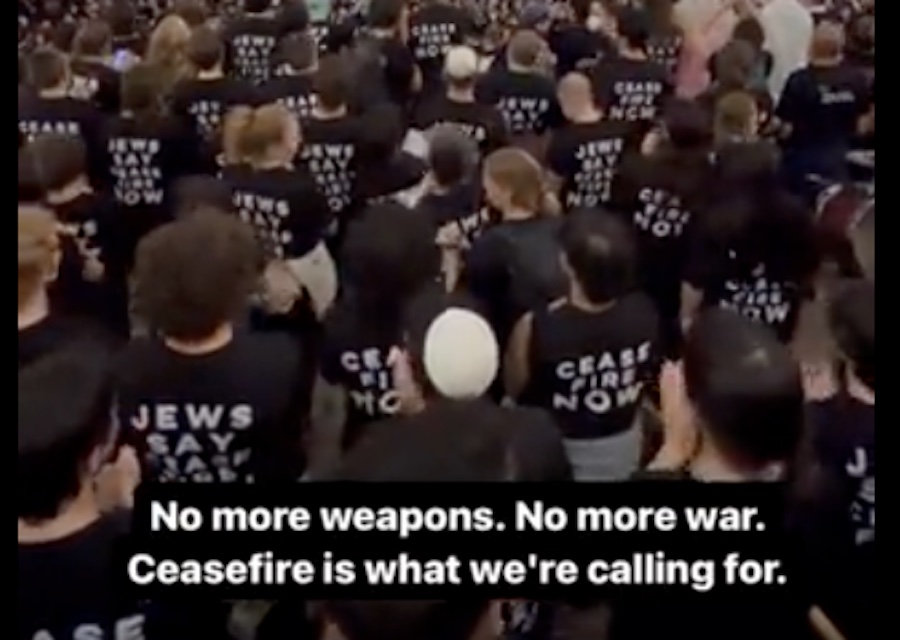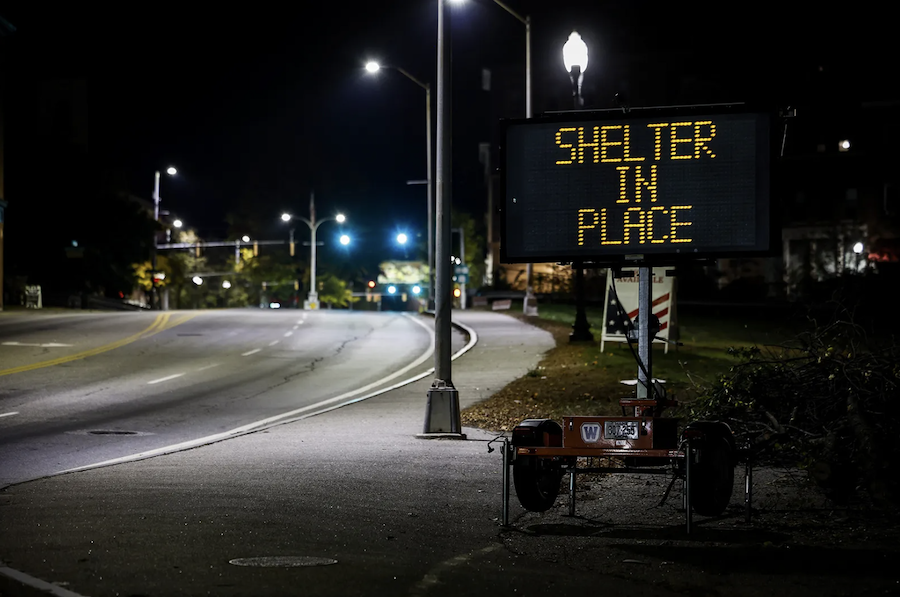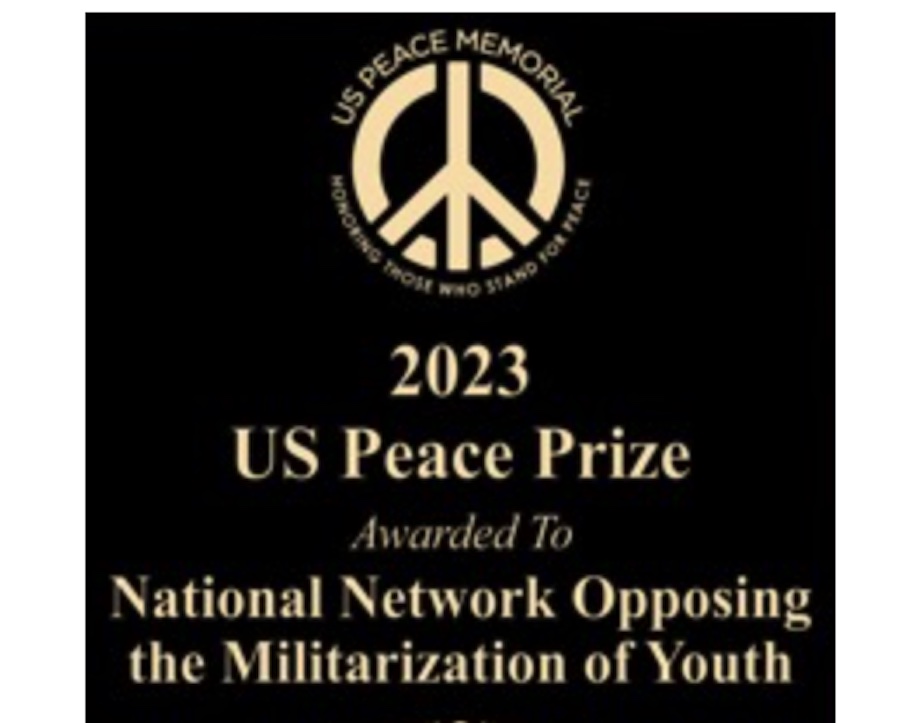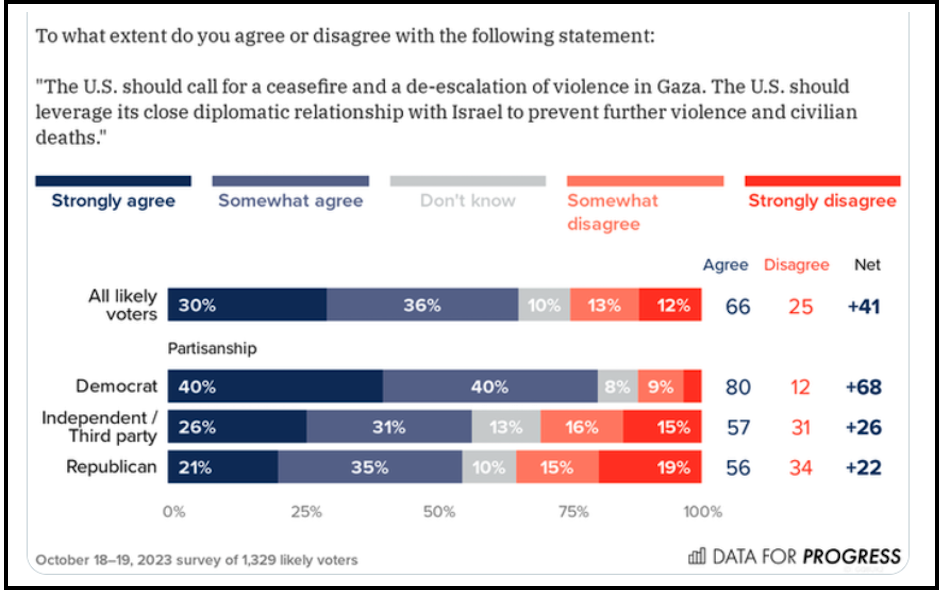FREE FLOW OF INFORMATION .
A survey by CPNN
Here are 257 actions for the International Day of Peace located in 43 of the 50 United States, as well as 19 events in Canada in 6 provinces. In order to save space, only one event is given in detail for each state of the USA while internet links are provided for the others.
The events were listed in Google during the weeks of September 17-28 this year under the key words “International Day of Peace,” “peaceday” or “Journée Internationale de la Paix” or were listed on the following websites:
– Campaign Nonviolence
– International Cities of Peace Facebook
In addition to the above events, there were several hundred singing events listed on the websites of One Day One Choir and Montessori schools singing for peace, but it was not possible to distinguish events of 2023 from events in previous years, except for those Montessori schools that were new this year, as listed below.
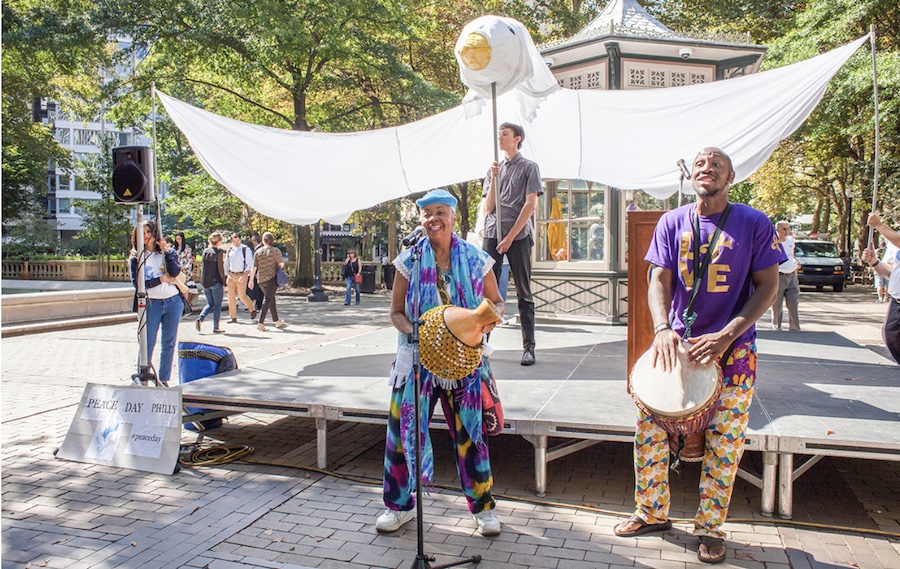
PEACE DAY PHILLY
Here are excerpts from the articles.
* * * CANADA * * *
STATEMENT BY THE PRIME MINISTER
“To be lasting, peace requires effort, ambition and dedication on the part of those who wish to leave a better future for future generations. Today, on the International Day of Peace , we highlight the importance of promoting a more peaceful and inclusive world and we renew our commitment to working with a range of partners around the world to build it. . . . In the face of significant global challenges, such as Russia’s illegal war of aggression against Ukraine and its far-reaching repercussions, we continue to stand up for peace, democracy, human rights and of the rule of law. . . In accordance with our Feminist International Assistance Policy , we also continue to promote the full participation of women in peace and security operations, for example through the Elsie Initiative , led by Canada . On this International Day of Peace, I encourage Canadians and our friends around the world to reflect on our shared values of tolerance, compassion and cooperation. Only by working together now can we deliver a peaceful future to the world tomorrow.”
MANITOBA
WESTMAN: The annual event will showcase an amazing line-up of activities, one of which is Kites for Peace. . . . “This year it’s really highlighted by a few things including Kites for Peace. It’s an initiative that goes world-wide. We were at the Boissevain Streetfest this past weekend and we were helping kids build their kites that they can fly at the Garden on Saturday afternoon from 1:00-4:00 pm. For those who haven’t made their kites yet, decorating starts at 11:00 am here at the Peace Garden.”
ONTARIO
LONDON: On International Day of Peace, Fanshawe students are invited to guided yoga sessions with discussion of the importance of slowing down/meditation. There will also be free snacks.
MIDLAND: We invite you to join us to celebrate the International Day of Peace, bringing your thoughts and ideas to share. Let’s be part of the solution. Actions for Peace, presented by Ed Milewski, Thursday, Sept. 21, 7 p.m., Midland Public Library, 320 King St., Midland.
ST. CATHERINES: The lives of those who resisted Adolf Hitler and Nazi Germany will take centre stage at an upcoming public lecture hosted by Brock University. It will feature esteemed scholar Kristin Semmens, Associate Professor of History at the University of Victoria and author of Under the Swastika in Nazi Germany.
The event coincides with the United Nations International Day of Peace.
THUNDER BAY: VIDEO: International Day of Peace Ceremony takes place at Waverly Park
TIMMINS: Peace Day Reception, Thursday, Sept. 21, noon, Schumacher International Peace Park. Celebrate the United Nations International Day of Peace in the park located near the McIntyre Community Centre. This year’s theme is actions for peace. Lunch will be served and all are welcome.
WATERLOO: We invite you to be in community with us during #PeaceWeek2023, which runs from the international Day of Peace on September 21st to the National Day for Truth and Reconciliation on September 30th. Be sure to check back regularly to see which events you might want to attend and help promote:
The Urgency of Social Justice Event
Transformative Mediation Training
Speak Your Peace
Grebel Gallery Exhibit: Trinity Atomic Bomb Test
QUEBEC
MONTREAL:JOURNEES DE LA PAIX:
NDG stories
Peaceful and fun booklet
Comic book on Peace and Harmonious Relationships
Everyday Non-Violence: Participatory Theater
Pensees et Splendeurs de la Colombie Autochone
Queer Futurism
L’Egalite et la Paix
Le Dialogue Interconfessionnel
Montreal Centre de Services de Justice Reparatrice: The CSJR will organize two activities:
A workshop After violence, is it possible to find peace? offered by Geneviève Chenard.
A workshop for Truth-Reconciliation Day Miro Pimatisiwin – Wishing each other a good life with Atikamekw artist Marie-Claude Nequado and in collaboration with the McCord Steward Museum
Consulate of Colombia in Montreal: Sign up for the painting workshop to commemorate the International Day of PEACE. The Consulate of Colombia in Montreal invites, within the framework of the International Day of PEACE to be celebrated next Thursday, September 21, to register for the act of dignity, called: “Canvas of Resilience” to experience the healing power of painting as victims of the armed conflict and builders of peace. The activity will be led by the Colombian artist Camilo Arias.
* * * UNITED STATES * * *
ALABAMA
TROY: TROY students will gather at Hawkins-Adams-Long Hall of Honor on the Troy Campus at 6:30 p.m. and, beginning at 7 p.m., will march, bearing international flags, to the Peace Dove statue, created by the artist Nall, on the Daniel Foundation of Alabama Plaza, located behind the International Arts Center. The march will be followed by a program, featuring student speakers and music.
AUBURN
FLORENCE
OPELIKA
ARIZONA
MESA: In recognition of International Peace Day and in celebration of the first anniversary of the City of Mesa becoming an International City of Peace, a Peace Pole Rededication Ceremony is being held in the Mesa Community College Rose Garden. Sponsors include Mesa Community College, the City of Mesa, Rotary International, City of Mesa Police Department, The Children’s Benefit Foundation Inc. and St. Matthew United Methodist Church. . . . The finale will be “May peace prevail on Earth” communicated in Sign Language by Karen Palmieri, Chinese by Dr. Ruth Tan Lim, Hebrew by Dr. Mittman, Spanish by Zarco Guerrero, Greek by Christos Chronis, German and Luganda by Dame Precious Namazzi, and Arabic by Aeda Alkindi. All will join in the statement in English to close the ceremony.
PRESCOTT
PRESCOTT, YAVAPAI COLLEGE
TUCSON
ARKANSAS
LITTLE ROCK: On Sept 18th, 375 students at Washington Magnet Elementary School assembled in the schoolyard. Holding aloft peace art they created, they marched for peace through the neighborhood as part of Arkansas Peace Week. Ms. Aleta Posey, school principal, led the students in a chant: P-E-A-C-E, Wildcats Walk for Peace! Community groups like Pax Christi Little Rock joined in solidarity.
HOT SPRINGS
CALIFORNIA
TIBURON: United Nations Association, Marin Chapter invites you to join us in celebrating the UN International Day of Peace. “An Evening with Peace Leaders.” Community Congregational Church of Tiburon
Be inspired, hear from everyday peacebuilders. Learn how we can model, support, and expand peacebuilding.
Honored Speakers
Tezikiah Gabriel, Executive Director, Pathways To Peace, Entrepreneur, Ordained Minister
RJ Jennings, Social Justice Advocate, Peace Alliance Board member, Executive Coach
Matthew Albrecht, Former Executive Director, The Peace Alliance, Author
Kimberly Weichel, Peacebuilder, Educator, Author, Non-profit leader/advisor (Moderator)
ARCATA
CASTRO VALLEY
DESERT HOT SPRINGS
FILLMORE
LAGUNA WOODS
LOS ANGELES
MANHATTAN BEACH
MANTECA
MARYSVILLE
MIDLAND
MONTEREY
MORGAN HILL
MORRO BAY
NAPA
PALO ALTO
SAN ANSELMO
SAN DIEGO PAX CHRISTI
SAN DIEGO PEACE RESOURCE CENTER
SEASIDE
YUBA CITY
COLORADO
TOWAOC: The 15th annual Week of Unity and Peace will be held from Sept. 16 – 24 with a kickoff Community Drum Circle event on Saturday, Sept. 16. Culture Fest happens on Saturday, Sept. 23, sponsored by the Hispanic Project and the Ute Indian Museum on the museum grounds. A Peace Gathering at the Peace Pole in Ute Indian Park will be held at noon during Culture Fest with a Flags of All Nations ceremony to pray for peace around the world. . . The Western Colorado Friends of the Himalayas are sponsoring the Annual Peace Dinner again this year. The buffet dinner will be held at Guru’s Restaurant, 438 Main St., with the 2023 peace awards given out, followed by a program. Saturday, Sept. 23, Culture Fest begins at 10 a.m. celebrating our cultural diversity, with booths, food, music, dance, and displays until 4 p.m. This event is at the Ute Indian Museum.
GRAND JUNCTION
WHEAT RIDGE:
CONNECTICUT
NEW HAVEN: A new symbol of peace is taking root at the Sound School. To celebrate International Day of Peace on Thursday, the school held a ceremony next to a newly planted tree and peace plaque, featuring remarks by an “atomic veteran” who grew up in New Haven. . . . To commemorate the day, the City of New Haven Peace Commission plants a peace tree in a different neighborhood every year. . . . The event comes as the city has experienced several high-profile instances of violent crime. Goode said the commission is not naive about what planting a tree will do, but he thinks it’s a step toward creating a culture of peace.
CORNWALL
NEWTOWN
DELAWARE
Peace Week Delaware 2023 will run from October 7–15. This will be our eighth year of organizing this statewide series of events. Event organizers can create their own web listings and attendees may register for individual events and receive reminders as the week unfolds.
DOVER:
DISTRICT OF COLUMBIA
ARMS BAZAAR PROTEST: Art Laffin of Dorothy Day Catholic Worker in Washington, DC reports: Tuesday September 12 from Noon-1:00 PM, members of the DDCW, Pax Christi Metro DC-Baltimore, Maryknoll Office for Global Concerns, and other peacemakers, held a prayer service and nonviolent witness outside the Gaylord National Resort and Convention Center in National Harbor, MD which once again is hosting the annual Air Force Association (AFA) “Air-Space-Cyber Conference and Technology Exposition,” what we call an “Arms Bazaar.” There are some 180 exhibitor booths at this year’s Air, Space & Cyber Conference, which began on September 11th and ended on September 13th. This witness was organized by the Dorothy Day Catholic Worker.
FRANCISCAN ACTION NETWORK
US INSTITUTE OF PEACE
FLORIDA
SARASOTA: The United Nations designated September 21 as International Day of Peace. In Nuestra Musica, we are celebrating it with Latinx Singers and Songwriters who dedicated their artistry to the causes of Peace and Social Justice. The songs presented are not necessarily protest songs, even though, some are. But the singers and songwriters are artist who struggled and fought with poetry, music and actions against totalitarian regimes, and some pay the high price of been censored, exiled and death. We are presenting songs from Argentina, Urugay, Chile, Spain, Brazil, Puerto Rico, US, Nicaragua and Cuba. Horacio Guarany, Pedro y Pablo, Leon Gieco, Joan Manuel Serrat, Rolando Alarcon, Jairo, Juan Carlos Baglietto, Chico Buarque, Patxi Andion, Paco Ibanez, Daniel Biglietti, Mercedes Sosa, Roy Brown, Pete Seeger, Joan Baez, Piero, Cuarteto Zupay, Jose Alfonso, Duo Guardabarranco and Pablo Milanes.
CORAL SPRINGS
FT MYERS Peace Day Block Party (announcement since removed)
MIAMI BEACH
WELLINGTON
WINTER PARK
GEORGIA
SANDY SPRINGS PAX CHRISTI: On September 24 at the main family mass at St. Jude the Apostle Church in Atlanta, we will start a monthly prayer vigil. We will pray for an end to gun violence and lift up the souls of those killed in mass shootings in the month as well as lifting up the names of the shooters. After all, like Cain they are our brothers and Jesus told us to forgive our brothers and especially these who are disordered or misguided.
HAWAII
HONOKA: Peace Day Parade & Festival with six days of peace-themed events. These include the Peace Day Parade and Festival (back after a three year pandemic pause), Honoka’a Business Association’s Peace Out Saturday street fair, and Katsu Goto Legacy Week in honor of the 19th Century “Hāmakuā Hero” and martyred Labor leader. The Parade will step off at 11 a.m. on Saturday, September 23, with an eclectic and colorful fusion of bands and dancers, street performers, floats and more. . . . Following the Parade, the Festival kicks off in the park’s football “oval,” with more music on stage, vendor booths, and peace displays. Proclamation, certificates and other activities begin at 12:30 p.m. Meanwhile, back on Mamane Street, “Peace Out Saturday” is happening, from 11 a.m. to 5 p.m. as people come to town dressed in their best tie dye and love beads. Throughout the day, peaceniks will find food trucks, pop-up vendors, music and groovy things to do for the keiki, like origami and giant bubbles.
HONGXANIJ
HONOLULU
KAILUA
MAKAWAO
ILLINOIS
CHICAGO Hundreds gathered at Daley Plaza on Monday for an afternoon of music and dancing as part of the 45th annual Peace Day Chicago celebration. . . . “As we continue to witness war and strife in places like Ukraine, and so many other nations, we need to be reminded that we play a part in our global communities,” Mayor Brandon Johnson said at Monday’s celebration. The free event included live music and performances along with a call-and-response for peace in every country of the world.
BATAVIA Second Annual Peace Day Celebration (announcement since removed)
CARBONDALE
CHICAGO SCHOOLS
JOLIET
LAKE ZURICH Ela Peace Pole Dedication Ceremony (announcement since removed)
ROCKFORD
WESTERN ILLINOIS UNIVERSITY
INDIANA
NOTRE DAME: Join the Kroc Institute for lunch and various responses to the United Nations’ new agenda for peace. This event will take place in person, with a recording to be posted following the event to the Kroc Institute’s YouTube page.
MUNCIE
IOWA
DUBUQUE: Loras College Alumni Campus Center. “Making Peace in Our Polarized Society” presented by International Day of Peace Speaker, Dr. Peter Coleman. This year’s Peace Festival invites us to explore constructive conflict resolution and sustainable peace. We will learn how families, companies, communities and nations have found resolution beyond their once polarized viewpoints. Sponsored by the Dubuque International Day of Peace Committee
DES MOINES
KENTUCKY
WIND HILLS: International Day of Peace, Thursday, Sept 21, Tibetan Buddhist prayer and readings from peacemakers to set us on a solid path.
Morning Practice for Nonviolence, Daily from 7:30-8am – Set a ground for awareness of nonharm with these morning meditations led by local peacemakers.
Peacemaker Conversation – Join us for a conversation with nationally known author, catalyst, and activist, Rivera Sun.
Monday, Sept 25, Noon, via Zoom and Facebook LIVE. Join us for a conversation with author Roxy Manning to explore a lived application of the Beloved Community.
OWENSBORO
LOUISIANA
LAFAYETTE: Lafayette Compassion Center.
September 21: International Peace Day Event
Sept. 23: We will have a labyrinth walk for International Peace Days of Action.
MAINE
MADAWASKA: Skylandia Organic Farm in Northern Maine will engage in mutual aid with seniors, community members, and the Little Free Pantry at our local library
MARYLAND
FREDERICK Peace Through Action USA will discuss how its capstone Calvert Peace Project works to build and nourish a culture of peace through an emphasis on social and civic engagements
ACCOKEEK
FREDERICK FRIENDS MEETING
WINDSOR
MASSACHUSETTS
BOSTON: This year’s event features a unique program of Music, Song, Arts & Peace Education led by emcee Dawn Duncan, including brief presentations by peacemakers such a Nichol Brewer-Lowry, Rev. Cindy Davidson, Isabella Fuentes, Dr. Ira Helmand, Dr. Jonathan King, David Shane Lowry, and Rev. Vernon Walker about their work. There will be art activities for children as well as musical performances by Miranda Henne, Toussaint Liberator, Alastair Moock, and Split Feather Singers. The day will conclude with the reading of a list of recent local victims of violence. We will walk to the nearby Garden of Peace to pray for peace among stones engraved with the names of these victims.
SHELBOURNE FALLS
SPRINGFIELD
WESTON Council on Aging and Weston Public Library (announcement since removed)
WORCESTER
Question for this article
What has happened this year (2023) for the International Day of Peace?
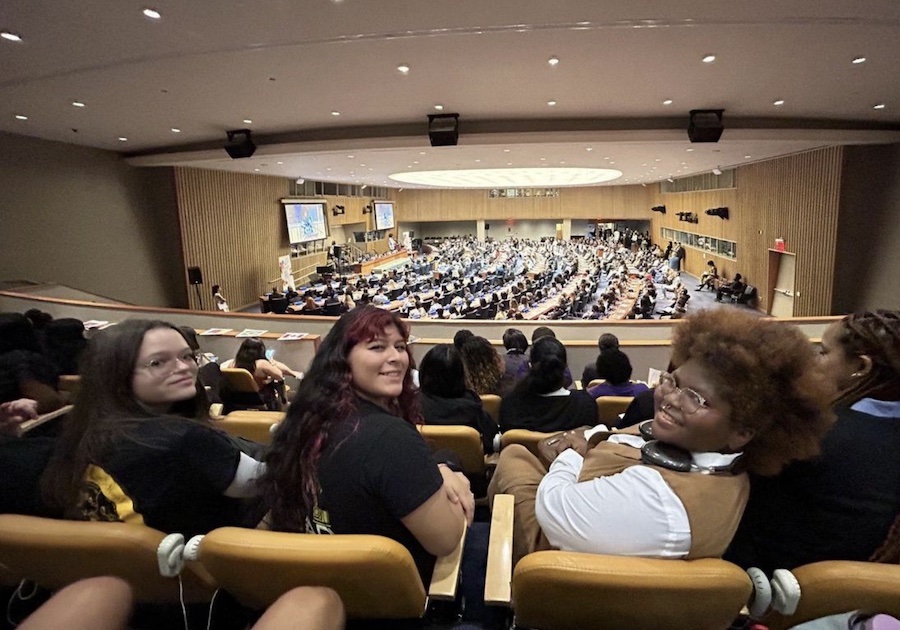
Students from Brooklyn visit the United Nations
(Survey continued from left column)
MICHIGAN
SOUTHFIELD: The city of Southfield, in collaboration with May Peace Prevail on Earth International™ Foundation, will host an International Day of Peace on Thursday, September 21 from 5–6 p.m. at the City’s Peace Poles located in front of City Hall.The event will begin with a presentation of colors by the Southfield Police and Fire Honor Guard followed by opening remarks from Councilman Lloyd Crews and a reading of the City’s International Day of Peace Joint Resolution by Mayor Siver. The event will also include presentation of the United Nation’s 2023 Theme for the International Day of Peace “Act Now!” by President of the Dr. Martin Luther King, Jr. Task Force Faira Glenn followed by a rendition of “Let there be Peace on Earth” by MLK Task Force International Relations Committee Co-Chair Barbara Seldon. The event will conclude with a Call for Peace in All Nations led by Hope United Methodist Church Youth Representative Remington DeVaull.
BOARDMAN
DETROIT SCHOOLS
GRAND RAPIDS
LANSING
TRAVERSE CITY
WHITE CLOUD
MINNESOTA
SUPERIOR: Superior recognized the United Nations International Day of Peace on Thursday. Community members gathered at Superior’s Sister City Park where Superior Mayor Jim Paine issued a proclamation in observance of Peace Day. The event also served to honor and remember Jan Provost of Superior. She was a local peace activist and founded Northland Grandmothers for Peace in 1983. Provost served as president of Northland Grandmothers for Peace until her passing in April 2020. The mission of Grandmothers for Peace is to work for peace and social justice and strive to eliminate the nuclear threat.
MINNEAPOLIS
NORTHFIELD
TWIN CITIES
MISSOURI
KANSAS CITY: September 23 – 24. PeaceWorks will be holding its annual Art Fair for artists local to Kansas City. Beginning artists and diverse artists are encouraged to apply. We also are inviting many local peace and Justice organizations to have booths. We will have a tent for these organizations to give a short presentation about the issues they address and also for poets, musicians, singers and street theater pieces. Location: Theis Park.
NEBRASKA
GRAND ISLAND: Nebraskans For Peace Focus on DEI & Sustainability: Holding their event at the Hub Cafe, Nebraskans For Peace had great turnout for their Community Conversation on Food and Sustainability, featuring guest speakers who are farmers, cafe owners, and sustainability coordinators. Nebraskans For Peace also held their first in-person board meeting since before the pandemic, using some of the time together to work through a diversity, equity and inclusion (DEI) training with Dr. Stephanie Bondi. On Sept 24, NFP board member Tom Genung was among those honored for their work over 15 years in a sustained nonviolent resistance to stop the Keystone XL pipeline. The ceremony was part of the 10th annual harvest of the Ponca Sacred Corn and took place on Ponca Nation land.
NEVADA
RENO: Life, Peace & Justice Commission of the Catholic Diocese of Reno, September 23 – We will hold our 3rd annual Day of Reflection. This year the title is Day of Reflection: “Why so Many Immigrants?” Moving from Sympathy to Empathy.
NEW JERSEY
PRINCETON: Celebrate Peace Day with the West Windsor Human Relations Council. Theme: Actions for Peace – Peace starts with ME. It is a call to action that recognizes our individual and collective responsibility to foster peace
MENDHAM-CHESTER
NEW MEXICO
SANTA FE: StopForeverWIPP (our website)
1.Nuclear Disarmament Now! Join Us For Our Weekly Picket Fridays @ Noon To 1pm (Corners Of Guadalupe & Alameda St.)
2.New Mexico Environment Department
In-Person And Virtual Listening Session On Wipp’s Permit. September 22 2023 @ 5:00 PM-7:00 PM. Larrazolo Auditorium. Harold Runnels Bldg.
NEW YORK
BROOKLYN PROSPECT PARK: In celebration of International Day of Peace, join Prospect Park Alliance and The Peace Studio for a book reading and signing of The First Day of Peace, a new children’s picture book by two of The Peace Studio’s co-founders, Maya Soetoro-Ng and Todd Shuster with illustration by Tatiana Gardel. The book offers a moving and modern take on the wondrous power of kindness and sharing.The event will include a reading of the book by Maya and Todd, alongside discussion and a fun peace-focused craft activity for kids and adults as well as a kids illustration workshop led by Tatiana. A light reception and the opportunity for book purchasing and signing will follow the reading.
ALLEGHANY
AMITYVILLE
BROOKLYN, JOHN DEWEY HIGH SCHOOL
COPENHAGEN
GENESEO
KINGSTON
LATHAM
MAINE
NEW YORK CITY ETHICAL SOCIETY
NEW YORK CITY PAX CHRISTI
NEW YORK CITY CODEPINK MOBILIZATION
NEW YORK CITY JAPAN INSTITUTE
NEW YORK CITY CONCERT BY BUSH
SAYVILLE
NEW YORK-UNITED NATIONS
MESSAGE OF SECRETARY-GENERAL GUTTERES: As we mark this International Day of Peace, people and our planet are in crisis.
Conflicts driving record numbers of people from their homes.
Deadly fires, raging floods and soaring temperatures.
Poverty, inequalities and injustices.
Mistrust, division and prejudice.
This year’s theme reminds us that peace is not automatic.
Peace is the result of action.
Action to accelerate progress towards the Sustainable Development Goals and ensure that no one is left behind.
Action to end the war on our planet and its natural gifts.
Action to uphold and protect the human rights and dignity of every person — especially as we celebrate the 75th anniversary of the Universal Declaration of Human Rights.
Action to use the timeless tools of diplomacy, dialogue and collaboration to defuse tensions and end conflict.
And action for those millions of people living through the horrors of war.
Peace is not only a noble vision for humanity.
Peace is a call to action.
Let us commit to build, drive and sustain peace for all.
YOUTH PROGRAM: Video of Youth Event Programme, 14 September 2023, UN Headquarters
RINGING OF PEACE BELL
NORTH CAROLINA
RALEIGH:
William Peace University (WPU) will celebrate its shared name and values with a series of on-campus events to mark the International Day of Peace. The day will start out with a gathering on the main lawn of the university at 3:20, featuring student art and an open-mic event. At 4 p.m. in Kenan Hall, a guest panel will participate in a live podcast discussing peacebuilding both internationally and locally. The panelists are worship leader, writer, and justice activist Angie Hong; development professional and peace activist Mustafa Rezaie; and cultural heritage and museum professional Alex Rose.
ASHEVILLE
OHIO
AKRON: Join the North Hill Community Development Corporation to celebrate the third annual International Day of Peace. Walk for Little Amal. Little Amal is a 12-foot puppet of a 10-year-old Syrian refugee girl who has traveled across 13 countries meeting more than a million people. This fall, between 7 September and 5 November 2023, she will journey 6,000 miles across the United States in one of the largest free public festivals ever created. Amal Walks Across America comes to Akron on September 23rd, starting at Waters Park and proceeding to People’s Park on North Main Street.
CANTON
CINCINNATI
COLUMBUS
GRANVILLE
HARTVILLE
LAKEWOOD
NORTH BENTON
PUT-IN-BAY
TIFFIN
ZOAR
OKLAHOMA
TULSA: The Mother Earth String Band and Choir will perform Thursday, September 21 (International Day of Peace) at Park Grove Creative Community, 4241 S. 37th West Avenue, from 6:00 to 9:00 p.m. After performing at Earth Day observances on Guthrie Green last year, McCulloch got the idea of forming the band with some of the many talented women she’s worked with, or wanted to work with, over the years. Music, she says, is the tool that can help unite us in these divisive times, and reduce the stress and anger which divide us. “When you sing with people, and you remind them of how it feels to sing together – and the songs they heard when they were younger that they know – some of that falls away,” she said. “We’re trying to just sort of soothe the waters with music, because music heals. Music unites.”
OKLAHOMA CITY ANNUAL CITY CELEBRATION
OKLAHOMA CITY DOVE SCHOOLS
OREGON
PORTLAND: Join CODEPINK and other anti-war, anti-imperialist and peace organizations in marking International Peace Day in Portland! Hear from anti-war speakers and performers, talk with like-minded peace-wagers and build connections for future organizin
ASHLAND
BEAVERTONCORVALIS
NEWBERG
PORTLAND PEACE TEAM
PORTLAND GROTTO
SALEM
SEASIDE LIBRARY
WALLOWA
PENNSYLVANIA
PHILADELPHIA PEACE DAY: Now in its 13th year, Peace Day Philly is helping to organize more than a dozen activities, some of which, including a meditation session and a workshop on grief, were held this past weekend. Hundreds of students are expected to participate in “Footballs Not Firearms,” a march and rally taking place Tuesday from 11 a.m. to 1:30 p.m. at Fairhill Square. PDP is collaborating with the Philadelphia Police Department on the event, and the Eagles are donating 150 footballs to give away to young people. Food, music and an art activity are also included. On Thursday, the day itself, PDP is organizing speakers and bringing drummers to the north side of City Hall from 11:30 a.m. to 12:45 p.m. At noon, attendees will participate in a worldwide minute of silence. Among the other activities planned for the week are an immigrant and refugee job fair from 1 to 3 p.m. Monday at 801 Market St.; a communication workshop at the Peace Center in Langhorne; and a virtual panel discussion about water access beginning at 6 p.m. Wednesday. For more information, visit peacedayphilly.org.
BETHLEHEM
MCCANDLESS
MERION
PHILADELPHIA – TEMPLE UNIVERSITY
PHILADELPHIA – SISTERS OF SAINT JOSEPH
PITTSBURGH
ZELIENOPLE
RHODE ISLAND
SOUTH KINGSTOWN; Sunday, Sept 24, 2023 – We welcome you to our 2nd Annual Intention Fest celebrating peace and wellness with over 50 peace makers and healing practitioners, meditation tent, drum circles, yoga, reflexology, massage sanctuary, peace rocks and peace flags. FREE EVENT
WESTERLEY
SOUTH DAKOTA
ABERDEEN: Each year the International Day of Peace (IDP) is observed around the world on September 21. The International Presentation Association works collaboratively with other groups to realize our priority Sustainable Development Goals (SDGs). Achieving the SDGs will create a culture of peace for all. Please join the Presentation Sisters and others around the world at Noon local time to observe a minute of silence and then to pray for peace.
TENNESSEE
MEMPHIS: Campaign Nonviolence Memphis. Join us on Thursday, September 21, 8 PM Eastern, for our quarterly PAX Mass, celebrated on the International Day of Peace and the first day of the Catholic Nonviolence Days of Action.
TEXAS
AUSTIN: The Second Annual Austin Peace Fest will take place Sunday, Oct. 1, from 1:00 to 7:00 p.m. at 2505 Princeton Dr., Austin, TX 78741.
Please invite your friends to bring a lawn chair, their refreshment of choice, and an eclectic musical taste.Donations support Nonviolent Austin. Other community partners include Texas Unitarian Universalist Justice Ministry, Texas Poor People’s Campaign, and Indivisible Austin.
CORSICANA
EL PASO
LAREDO
MCALLEN
UTAH
SALT LAKE CITY: Utah Campaign to Abolish Nuclear Weapons. September 27, 6pm, Walk (as part of Defuse Nuclear War) from the Federal Building, 100 South and State Street, to Washington Square, 400 South and State Street, and then back to the Federal Building. We will carry our banner, “Nuclear Weapons are Illegal” and pass out flyers.
VERMONT
LINCOLN: Sunray Meditation Society. September 21, 2023: UN International Day of Peace Celebration -October 1 & 14, 2023: Join us for two online workshops nurturing Mother Earth this fall. On October 1st, Dr. Orest Pelechaty will offer teachings on bio-Dynamics. Then October 14th, Jose Rodriguez and Yulia Klimento bring their permaculture wisdom to the Sunray Peace Village.
VIRGINIA
CHARLOTTESVILLE: World Beyond War & Just World Educational. Time for a Ceasefire in Ukraine? – A public discussion featuring Medea Benjamin, Helena Cobban, Ray McGovern, and David Swanson.
WASHINGTON
LOPEZ ISLAND: Join us for the Lopez Library 2nd annual International Day of Peace sing-in. Each year, around the world in a consecutive time zone, thousands of children gather to “Sing for Peace” in their respective groups and share a peaceful story. Imagine, children singing a unified song for a 24 hour period! It’s simple AND Powerful!
WISCONSIN
MILWAUKEE: September 21, 2023. Peace Action Wisconsin Teach-In. We’ll discuss how to achieve peace in the time of heightened global conflict and tension. We’re part of the Global Week of Action to End the War in Ukraine Sept. 30-October 8, 2023. September 30 — Stand for Peace at Noon At 12:30 PM we will gather on the grassy spot kitty-corner from Collectivo for a rally
APPLETON:
GREEN BAY
OMRO
***** MONTESSORI *****
In addition to the events listed above, there were 107 new events in North America to celebrate the International Day of Peace on the website of the Montessori Schools, i.e. events that were not listed last year:
Alberta: High River
Arizona: Flagstaff, Litchfield Park, Phoenix (4), Sedona
British Columbia: Courtney, Lantzville,
California: Antioch, Carmel Huntington Beach, Oceanside, Valencia
Colorado: Aurora (2), Littleton
Connecticut: Avon, West Hartford
District of Columbia, Acton Academy
Florida: Fernandina Beach (2), Gainsville, Jupliter, Kissimmee, Miami, Middleburg, Naples, Palm Bay, Plantation, Rockledge, Stuart, Wellington
Georgia: Atlanta, Marietta
Hawaii: Kihei
Illinois: Chicago (2), Elburn, Elmhurst, Kildeer, Wheaton
Kansas: Lawrence
Maine: Auburn, Kingfield
Massachusetts: Newton, Quincy, Shrewbury
Michigan: Detroit
Minnesota: Lakeville, Prior Lake
Missouri: Jefferson City
New Hampshire: Manchester
New Jersey: Cherry Hill, Cliffside Park, Edgewater, Moorestown
New York: Cold Spring, Copenhagen, East Aurora, Glen Spey, Southampton
North Carolina: Charlotte, Henderson, Holly Springs, Old Fort, Pinehurst, Washington, Winterville
Ontario: Aurora, Caledon, Cambridge, Innisfil, Milton
Oregon: Newport, Portland
Pennsylvania: Bethlehem, Merion Station, State College, West Chester
South Carolina: Elgin, Fort Mill
Tennessee: Cordova, Knoxville (2)
Texas: Houston, Plano, Prosper, Round Rock, San Antonio, Sugar Land
Utah: Mantua, Riverton, Salt Lake City, Santa Clara, South Jordan
Virginia: Alexandria, Lexington, Lynchburg, Sterling, Virginia Beach, Woodbridge
Washington: Issaquah, Mountlake Terrace, Northbend, Spokane Valley, Seattle
Wisconsin: Racine
